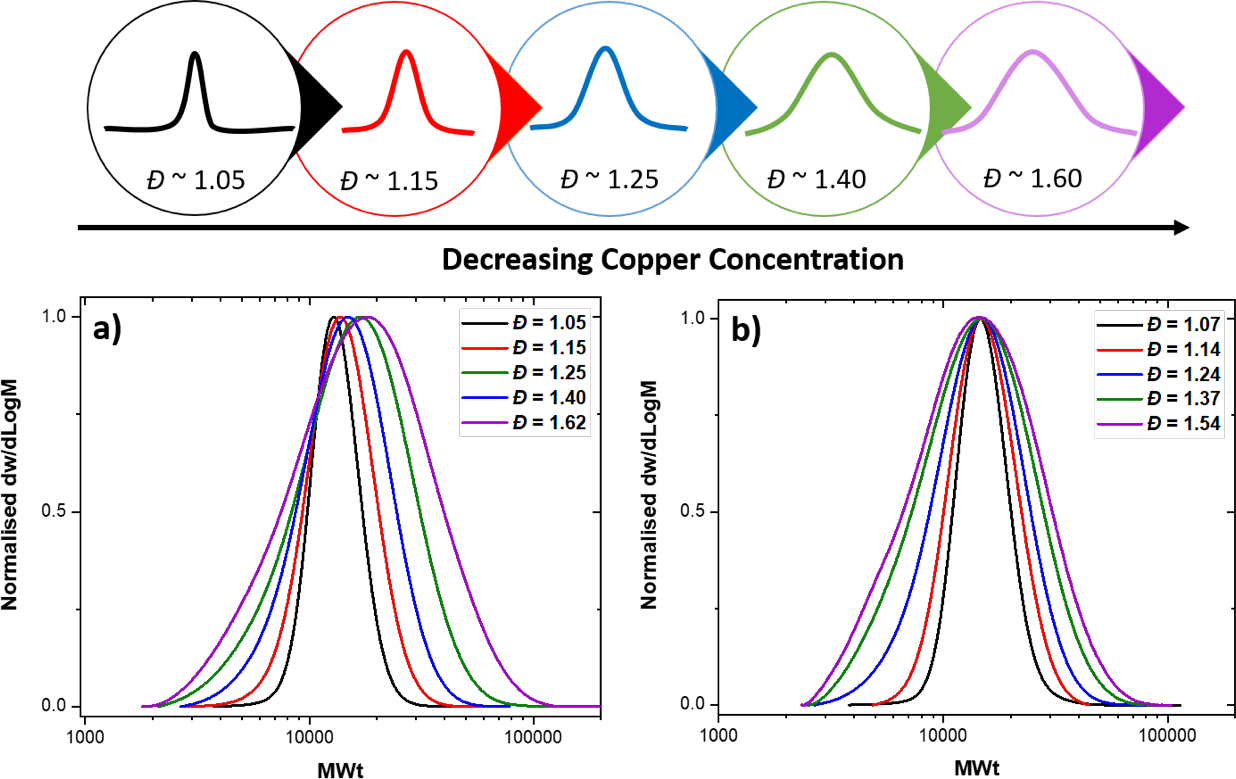Tuning Dispersity by Photo-Induced ATRP: Monomodal Distributions with ppm Copper Concentration
Researchers from the group of Polymeric Materials in D-MATL have developed a simple methodology to tune the dispersity of polymers without compromising the end-group fidelity of the resulting materials. Both the number average (Mn) and the weight average (Mw) distribution can be efficiently controlled, thus paving the way for applications in both academia and industry.
Dispersity significantly affects the properties of polymers. However, current methods for controlling the polymer dispersity are limited to bimodal molecular weight distributions, adulterated polymer chains or low end-group fidelity and rely on feeding reagents, flow-based or multicomponent systems. To overcome these limitations, the group of polymeric materials introduced a simple batch system whereby photo-induced ATRP is exploited as a convenient and versatile technique to control dispersity of both homopolymers and block copolymers. By varying the concentration of the copper complex, a wide range of monomodal molecular weight distributions can be obtained (Đ= 1.05-1.75). In all cases, high end-group fidelity was confirmed by MALDI-ToF-MS and exemplified by efficient block copolymer formation (monomodal, Ɖ= 1.1-1.5). Importantly, this approach utilises ppm levels of copper (as low as 4 ppm), can be tolerant to oxygen and exhibits perfect temporal control, representing a major step forward in tuning polymer dispersity for various applications.
